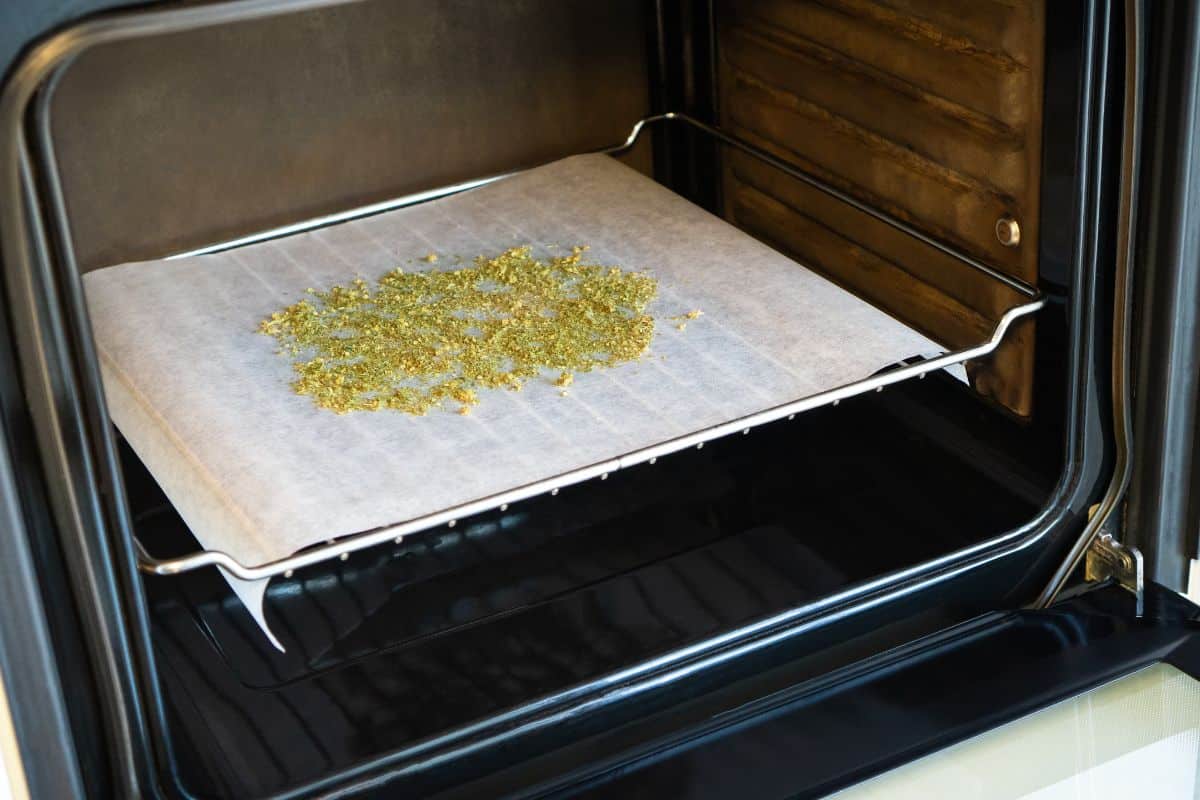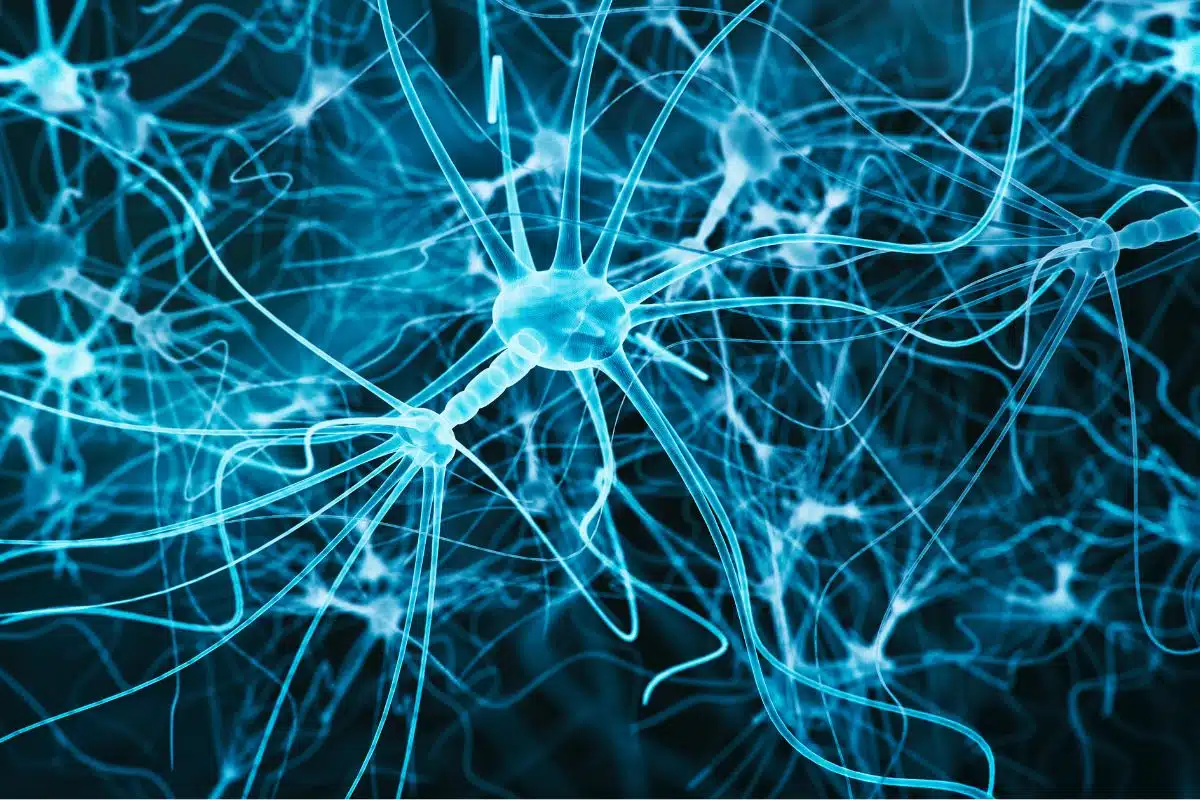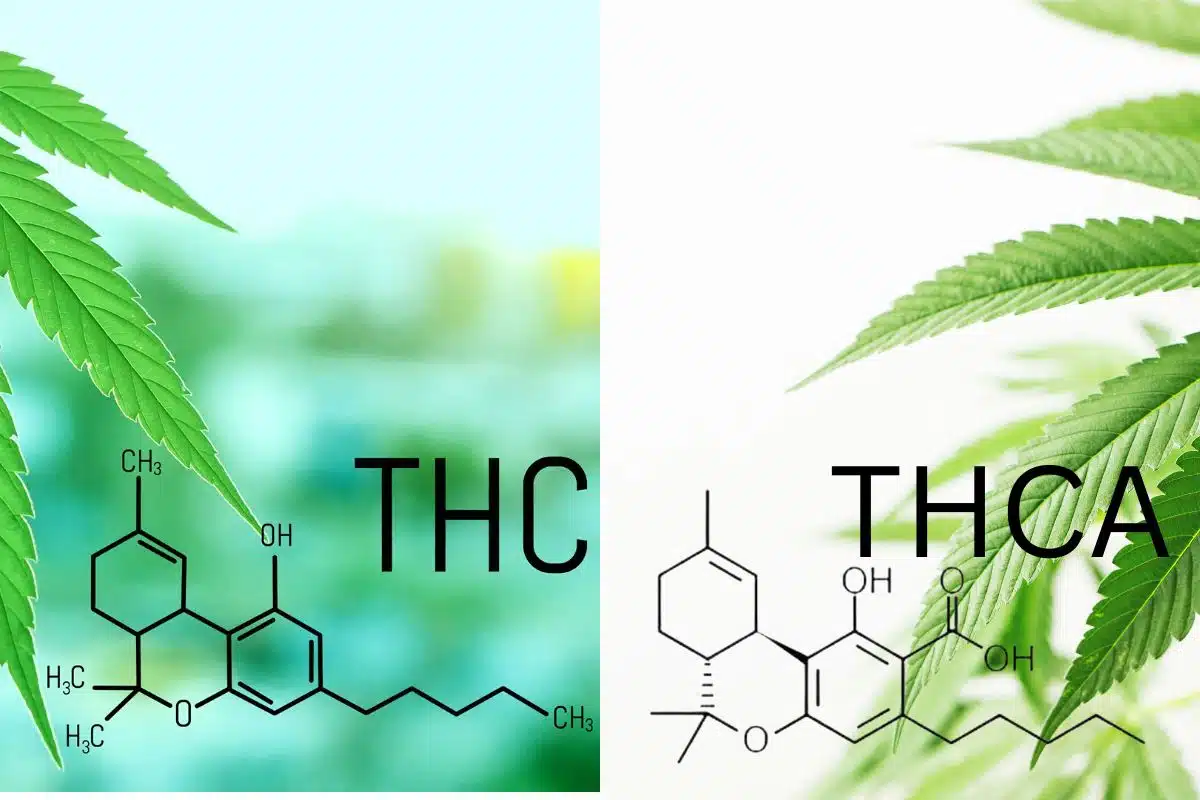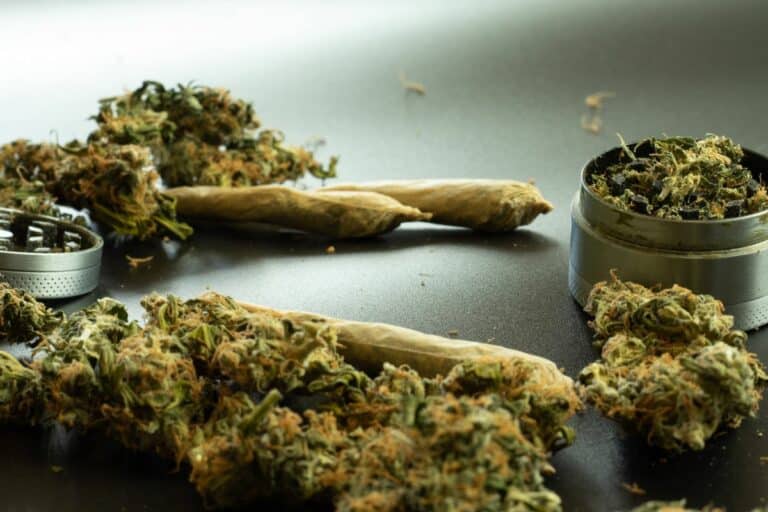THC vs. THCa: Understanding the Differences and Effects
Dive into the battle royale of THC versus THCa and dig up some wicked secrets of the weed world and its zany effects on you. THC steals the spotlight as the headliner, ideal for those on the hunt for euphoria. On the flip side, THCa lurks in the background, the silent sorcerer without the buzz, nestled in the fresh parts of the herb. This scoop isn’t just fun and games; it’s pure gold for anyone keen to elevate their cannabis experience. Buckle up, because you’re on the verge of unlocking some mind-blowing tricks of how these two components play together – insights that might just revolutionize your approach to feeling good!
Table of contents
The transformation of THCa into THC occurs through a process known as decarboxylation, whereby the application of heat removes a carboxyl group from the THCa molecule. This chemical reaction ultimately results in the active form of THC that influences your endocannabinoid system and alters perception, mood, and a host of other bodily functions. Without the process of decarboxylation, consuming raw cannabis leaves or flowers would not yield the same effects, as the impact of THCa on the body differs significantly from the effects of THC.
Your understanding of these two cannabinoids expands your knowledge of cannabis’ potential benefits and applications. While research continues to explore the scope of THCa’s immuno-modulating properties, THC’s effects are well-documented and range from medical therapies to recreational use. Whether you’re a patient seeking relief or a consumer pursuing enjoyment, grasping the nuances between these compounds will empower you to make informed decisions about your cannabis consumption.
Fundamentals of THC and THCa
In exploring the intricacies of Cannabis, it’s important for you to understand the distinct characteristics of THC (tetrahydrocannabinol) and THCa (tetrahydrocannabinolic acid), both prominent cannabinoids with different properties and effects.
Chemical Properties and Differences
THC and THCa are closely related molecules with distinct chemical properties. THC, the main psychoactive compound in Cannabis, is responsible for the “high” you may experience. It has a cyclical carbon ring system that allows it to bind readily to CB1 receptors in your brain, leading to its intoxicating effects. In contrast, THCa is the non-psychoactive acidic precursor to THC found in the raw plant. The chemical structure of THCa includes an additional carboxylic acid group, which inhibits its ability to engage with CB1 receptors.
- THC: C₂₁H₃₀O₂
- THCa: C₂₂H₃₀O₄
THCa transforms into THC through a process called decarboxylation, which occurs when the Cannabis plant is dried or heated.
Psychoactive Effects and Potency
The psychoactive effects of THC and THCa differ greatly. THC is potent and can alter your perception, behavior, and mood due to its interaction with the brain’s receptors. This cannabinoid is considered psychoactive because it produces intoxicating effects. Conversely, THCa does not produce psychoactive effects because it doesn’t bind in the same way to neuronal receptors. This lack of psychoactive properties means that THCa cannot induce the “high” that THC does, regardless of its quantity or concentration.
Medical and Therapeutic Uses
Both THC and THCa have medical and therapeutic benefits, but their uses are distinct. THC is often utilized for its pain relief capabilities and its ability to help with nausea, lack of appetite, and certain psychological conditions. For therapeutic purposes, its psychoactive properties can be either beneficial or detrimental, depending on your condition and personal reaction to the compound.
THCa has shown promise in preclinical studies for its potential anti-inflammatory and neuroprotective properties. Unlike THC, it can offer medicinal benefits without the psychoactive effects, which can be advantageous if you need symptom relief without the intoxication.
Legal Status and Regulations
The legal status of cannabinoids varies widely and can be complex. In the United States, for example, THC is classified as a Schedule I controlled substance under federal law, with varying legality at the state level. Some states permit its use for medical or recreational purposes, while others restrict it entirely.
THCa’s legal status is somewhat ambiguous, as it is not directly listed under the federal Controlled Substances Act. However, since it is naturally occurring in the Cannabis plant and can convert to THC, its legal treatment often aligns with that of THC. It’s important to consult local laws, as the 2018 Farm Bill federally legalized hemp-derived cannabinoids with a THC concentration of no more than 0.3% on a dry weight basis.
Understanding Decarboxylation

Decarboxylation is a critical chemical reaction that transforms the non-psychoactive THCa in raw cannabis into the psychoactive compound THC, unlocking its full potential. This process is essential for you to experience the psychoactive effects of cannabis in THCa products.
The Decarboxylation Process
The decarboxylation process involves the removal of a carboxyl group from a molecule. In the case of cannabis, decarboxylation is necessary to convert THCa (tetrahydrocannabinolic acid), which is non-psychoactive, into psychoactive THC (tetrahydrocannabinol). This conversion happens when you apply heat exposure to raw cannabis.
- Mechanism: Heat causes the release of carbon dioxide (CO2) from THCa, resulting in THC.
- Enzymes: Fresh cannabis contains enzymes that can naturally decarboxylate THCa over time, although at a much slower rate compared to heat application.
By understanding this process, you can better manipulate the potency and effect of your cannabis experience.
Methods and Practices
To achieve decarboxylation, various methods can be used, each requiring careful attention to temperature and time to prevent degradation of the cannabinoids.
- Oven Baking: A common home method where you bake ground cannabis on a tray in an oven, typically around 220°F (104°C) for approximately 30 to 40 minutes.
| Temperature | Time |
| 220°F (104°C) | 30-40 minutes |
Smoking & Vaping: Instantaneous decarboxylation occurs when you smoke or vape, as these methods expose cannabis to high temperatures rapidly.
Understanding the proper techniques for decarboxylation will ensure you activate the THC in your cannabis effectively, whether you’re in the kitchen creating edibles or using a vaporizer.
Pharmacology and Body Interactions

In this section, you’ll learn how THC and THCa interact with your body’s cannabinoid receptors and how they play distinct roles within the endocannabinoid system.
Cannabinoid Receptors and Effects
THC (tetrahydrocannabinol) binds with the CB1 and CB2 cannabinoid receptors in your body. It acts as a partial agonist to these receptors, primarily affecting the central nervous system and the brain. This binding is responsible for THC’s psychoactive effects, which can influence your perception of pain and potentially provide neuroprotective qualities. However, it is important to note that THC’s impact on neurodegenerative diseases is still under investigation.
In contrast, THCa (tetrahydrocannabinolic acid), the non-psychoactive precursor to THC found in raw cannabis, does not bind as readily with CB1 or CB2 receptors. It may have other properties, such as anti-inflammatory benefits, but the degree of these effects and their mechanisms are less understood compared to THC.
Endocannabinoid System’s Role
Your endocannabinoid system (ECS) is a complex cell-signaling system that plays a pivotal role in regulating a range of functions and processes, including mood, appetite, and memory. Both THC and THCa interface with this system, albeit differently.
THC’s engagement with the ECS through CB1 and CB2 receptors can modulate pain perception and provide relief from certain forms of inflammation. As a result of these interactions, THC is often utilized in medicinal contexts to alleviate symptoms related to multiple sclerosis and other neurodegenerative conditions.
THCa’s influence on the ECS is less direct. Current research suggests that THCa may interact with the system in a way that does not produce the “high” associated with THC, which could offer therapeutic potential without the psychoactive effects. The promise for THCa lies particularly in its potential to slow down neurodegenerative processes and serve as a neuroprotective agent.
Consumption and Experience

When consuming cannabis, your experience varies depending on whether you inhale or ingest compounds like THC and THCa. These variations stem from how these compounds interact with your body and are converted during consumption.
Inhalation Vs. Ingestion
Inhalation, through smoking or vaping, rapidly introduces THC into your bloodstream, leading to a quick onset of effects. When you smoke or vape, the heat converts THCa in the cannabis plants to THC, the compound responsible for the intoxicating high. Conversely, ingestion of cannabis, such as through edibles or tinctures, involves a different process. The consumed THCa, in its non-intoxicating acidic form, is transformed into THC by your liver, this conversion is a reduction in chemical structure and can take longer, sometimes over an hour, to produce effects.
- Smoking/Vaping: Quick onset; active THC consumed
- Edibles/Tinctures: Delayed onset; THCa converted to THC in the body
Comparing Consumption Outcomes
The potency and efficacy of THC can be modulated depending on the method of consumption. Inhalation can offer more immediate control over the intensity of the high, allowing you to gauge and possibly limit side effects. In contrast, the delayed onset from ingestion can lead to overconsumption, as the full effects may not be felt immediately, potentially leading to an unexpectedly intense experience.
- Inhalation:
- Rapid onset
- Easier to control dosage
- Might result in fewer side effects
- Ingestion:
- Slower onset
- Prolonged duration
- Greater risk of overconsumption
Understanding the difference between THC and THCa, as well as the consumption method, allows you to better predict and manage your cannabis experience.
Non-Psychoactive Benefits
| Benefit Category | THC (Tetrahydrocannabinol) | THCa (Tetrahydrocannabinolic Acid) |
|---|---|---|
| Pain Relief | May help alleviate pain and discomfort. | Some studies suggest anti-inflammatory and analgesic properties. |
| Anti-Nausea | Has antiemetic effects, potentially useful in managing nausea and vomiting. | Similar potential anti-nausea effects, particularly in its acidic form before decarboxylation. |
| Appetite Stimulation | Known to increase appetite, useful for patients undergoing treatments that cause appetite loss. | Some anecdotal evidence suggests THCa may also stimulate appetite without the psychoactive effects. |
| Muscle Relaxation | May help with muscle spasms and tension. | THCa is being studied for potential muscle relaxant properties without inducing a high. |
| Anti-Inflammatory | Exhibits anti-inflammatory properties. | Some research indicates THCa’s potential as an anti-inflammatory compound. |
| Neuroprotective | Studies suggest neuroprotective properties, potentially beneficial for certain neurological conditions. | Limited research, but THCa is being explored for its neuroprotective effects. |
| Sleep Aid | Some users report improved sleep with THC. | Limited evidence, but THCa may have calming effects that could contribute to better sleep. |
When discussing THC and THCa, it’s important to differentiate between their psychoactive effects and their potential for therapeutic use. Non-psychoactive benefits refer to the health and medical advantages that can be experienced without inducing a high.
Therapeutic Applications
THCa, the acidic precursor to THC, presents a range of therapeutic applications without the psychoactive effects associated with THC. Studies suggest that THCa has anti-inflammatory properties which may benefit conditions involving inflammation. Additionally, its potential role as a neuroprotective agent offers promise for neurodegenerative diseases.
Furthermore, there is evidence indicating that non-psychoactive cannabinoids, like THCa, can aid in nausea reduction and appetite stimulation. This is particularly beneficial for individuals undergoing treatments such as chemotherapy, where nausea is a common side effect.
Raw Cannabis and Its Potential
The use of raw cannabis flower through methods such as juicing may provide numerous non-psychoactive benefits. Since raw cannabis contains non-psychoactive cannabinoid THCa, it does not cause a high but can contribute to health benefits when incorporated into your regimen.
Raw cannabis is championed for potential benefits that include mitigating pain and inflammation without the psychoactivity typically associated with traditional cannabis consumption. This makes it a promising option for those looking to integrate the therapeutic aspects of cannabis into their lifestyle without experiencing the alteration of mental state.
Remember, while the potential benefits of non-psychoactive cannabinoids are promising, more research is needed to fully understand their effects and therapeutic potential.
Industry and Product Insights

When exploring the cannabis industry, it’s crucial to understand the diverse range of cannabis products and the rigorous analytical techniques that assure their quality. These factors play a pivotal role in differentiating products and maintaining industry standards.
Cannabis Product Varieties
In your journey through the cannabis market, you’ll encounter a spectrum of product varieties, each with unique characteristics. Processed cannabis products, such as oils, edibles, and topicals, are designed to cater to varied consumer preferences and use cases. If you’re interested in the potency and aromatic profiles of cannabis, strains and terpenes are significant. Strains vary widely in their THC to THCa ratios and terpene compositions, influencing not only the aroma but also the effects experienced when products are consumed via smoke or other methods.
For example, raw flower retains natural cannabinoids like THCa which, when decarboxylated (exposed to heat), converts into the psychoactive THC. Unlike raw flower, specialty concentrates such as THCa diamonds represent purity and potency, targeting consumers seeking a robust experience. Conversely, hemp-derived products are legally required to contain less than 0.3% THC, focusing on providing benefits without a high.
Analytical Techniques and Quality Assurance
To ensure the safety and consistency of cannabis products, the industry employs advanced analytical techniques like gas chromatography. This method enables precise identification and quantitation of cannabinoids, including the distinction between THC and THCa, as well as assessing terpenes and possible contaminants. Your assurance of quality comes from rigorous testing protocols, which uphold product integrity from cultivation to consumption.
Quality assurance extends to accurate labeling. This involves clearly communicating levels of THC, THCa, and other key cannabinoids to you, assuring you have the necessary information to make informed decisions. For instance, in highly processed cannabis, distinguishing between THC and THCa content might appear complex; however, transparency in labeling practices ensures you grasp the implications for dosage and expected effects.
By understanding the varieties and the extensive quality assurance practices in the cannabis industry, you’re better equipped to navigate this evolving market with confidence and knowledge.
Emerging Research and Potential Discoveries

As you explore the realm of cannabinoids, key distinctions between THC and THCa come to light through scientific exploration, revealing implications for both medical applications and understanding of recreational drugs.
Latest Findings in Cannabinoid Studies
Recent studies have demonstrated that Δ9-Tetrahydrocannabinolic Acid A (THCa), a non-psychoactive precursor to Δ9-Tetrahydrocannabinol (THC), may have its own distinct medical potential. For instance, emerging research outlines THCa’s possible applications in addressing Huntington’s disease, indicating a new avenue of therapeutic benefits beyond the well-known cannabidiol (CBD) and THC. Unlike THC, THCa does not produce psychoactive effects, which posits its utility in a medical context without the associated “high” typically linked to cannabis usage. Moreover, there’s an understanding evolving about the presence of other cannabinoids like cannabigerolic acid (CBGA) and cannabidiolic acid (CBDA), which may offer various health benefits. These findings pivot us toward a future where more precise and potentially effective treatments using different cannabis components are available.
Future of Medical Cannabis
Looking forward, the medical cannabis industry might be reshaped by new discoveries such as the therapeutic potential of cannabinoids like THCV, and refined uses of CBDA and CBGA. As researchers continue to untangle the complexities of these compounds, there is a promise for novel treatments that are more targeted and have fewer side effects. The classification of substances like delta-8 and delta-9 as either therapeutic agents or recreational drugs is crucial, as it influences both regulatory perspectives and scientific inquiry. Your understanding of these distinctions and the ongoing research helps in appreciating how the spectrum of cannabinoids could offer a broad array of health benefits yet to be fully realized.
Comparative Analysis and Conclusion
| Aspect | THCa (Tetrahydrocannabinolic Acid) | THC (Tetrahydrocannabinol) |
|---|---|---|
| Chemical Structure | In its raw, unheated form, cannabis plants contain THCa, which is the acidic precursor to THC. | The psychoactive compound produced when THCa undergoes decarboxylation (heating). |
| Psychoactivity | Non-psychoactive in its raw form. Requires decarboxylation to convert into THC and induce psychoactive effects. | Psychoactive; responsible for the “high” associated with marijuana use. |
| Biological Form | Found abundantly in raw cannabis plants, especially in the trichomes. | Formed through the decarboxylation of THCa, often due to heat (smoking, vaporizing, cooking). |
| Effects | Primarily associated with potential anti-inflammatory, antiemetic, and neuroprotective effects without the intoxicating properties of THC. | Euphoria, altered perception of time and space, increased appetite, relaxation, and potential therapeutic effects. |
| Medical Applications | Studied for potential benefits in conditions such as pain, inflammation, nausea, and neurodegenerative diseases. | Used medically for pain management, nausea control, appetite stimulation, and various other therapeutic applications. |
| Legality | Generally legal in areas where cannabis is legalized for medicinal or recreational use, as it is non-psychoactive. | Legality varies worldwide, often subject to strict regulations due to its psychoactive nature. |
| Administration | Consumed through raw cannabis, juicing, or using products with minimal heat exposure to preserve its acidic form. | Typically consumed through smoking, vaporizing, edibles, or other methods involving heat to activate THC. |
In this section, you’ll gain a clear understanding of the crucial differences between THC and THCa, and their respective implications for you, whether you’re a consumer or part of the industry.
Summarizing the Key Distinctions
THC (Tetrahydrocannabinol) is the main psychoactive cannabinoid responsible for the characteristic ‘high’ associated with cannabis use. It exerts its effects by binding to cannabinoid receptors in the brain, contributing to its psychoactive properties. On the other hand, THCa (Tetrahydrocannabinolic acid) is a non-psychoactive precursor to THC found in the raw cannabis plant. Unlike THC, THCa does not produce a psychoactive effect because it does not fit the shape of the CB1 receptors in your brain when in its acidic form.
Research indicates that THCa has a significantly weaker binding affinity for cannabinoid receptors than THC, illustrating the profound impact that a slight difference in molecular structure can have on your body’s response. The process of decarboxylation converts THCa into THC, this occurrence typically happens when cannabis is heated, as in smoking or vaporizing.
- THC: Potent psychoactive effects, strong affinity for CB1 receptors.
- THCa: Non-psychoactive, weaker receptor affinity, requires decarboxylation to become THC.
Implications for Consumers and Industry
Your experience with cannabis products and the market trends largely fluctuate based on the understanding of THC versus THCa. For consumers seeking the therapeutic benefits without the psychoactive effects, products rich in THCa may be more appealing. The potential to alleviate symptoms like vomiting from chemotherapy without impairing cognitive function can be a significant advantage. Moreover, it’s essential for you to be educated on the type of cannabinoid you are consuming and its expected effects.
For the industry, recognizing market trends and directing efforts towards consumer education will determine the success of products containing either THC or THCa. Innovative methods to preserve the integrity of THCa in products, as well as ensuring accurate labeling and information, are key for industry responsibility and consumer satisfaction.
- Consumer Education: Knowing which cannabinoid meets therapeutic needs without undesirable effects.
- Market Trends: Demand for non-psychoactive options could see rise in THCa-rich products.
Frequently Asked Questions
In this section, you’ll find concise answers to common questions about THCa and THC, focusing on their differences, effects, and the impact of heat on their properties.
Does heating THCa lead to its conversion into THC?
Yes, heating THCa does lead to its conversion into THC through a process called decarboxylation, which occurs when cannabis is smoked, vaporized, or cooked.
What distinguishes THCa from Delta 9 in terms of effects and structure?
THCa is the non-psychoactive acid form of THC. Structurally, the presence of the carboxyl group in THCa makes it non-psychoactive, whereas Delta 9-THC, commonly referred to as THC, lacks this group and is psychoactive.
Can consumption of THCa induce psychoactive effects similar to THC?
No, consuming THCa in its raw form will not induce psychoactive effects because it doesn’t affect the brain in the same way that THC does.
What are the recognized therapeutic benefits of THCa?
THCa has been recognized for its potential anti-inflammatory, neuroprotective, antiemetic, and anti-proliferative properties, though research is ongoing.
When examining cannabis labels, how do THC and THCa differ in representation?
Cannabis labels typically show the levels of THCa and THC separately to inform consumers about the potential potency of THC after decarboxylation and the current concentration of THCa.
Which is more potent when consumed, THCa or THC?
THC is more potent than THCa when consumed as it is the psychoactive compound that produces the well-known effects associated with cannabis use. THCa does not have these psychoactive properties.








